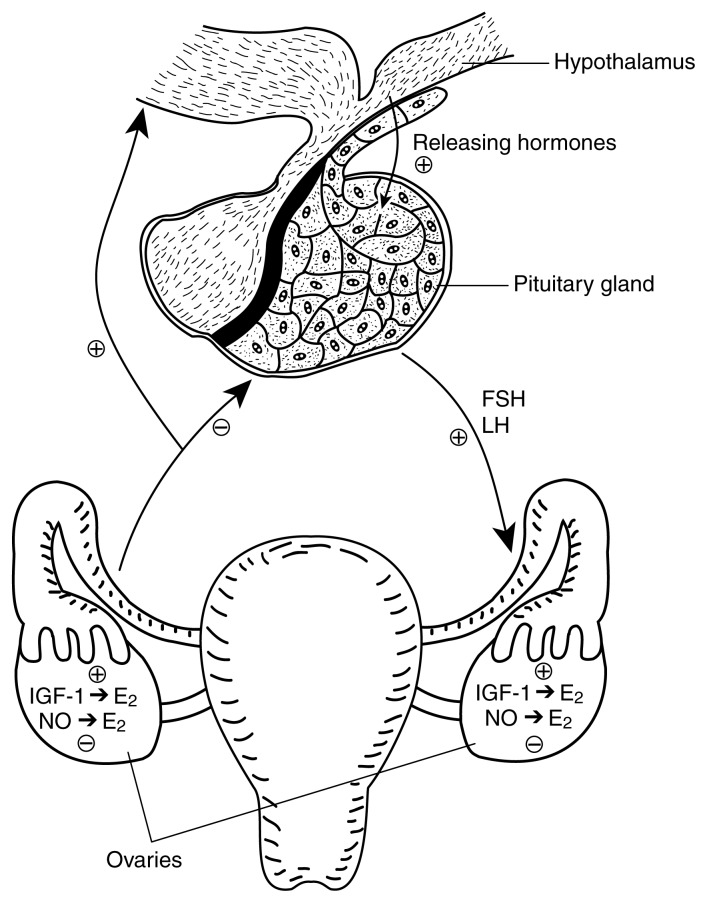Orchestrating female puberty: The role of the H-P-O axis.1 The intraovarian systems described in this article supplement other reproductive control mechanisms, principally certain events governed by the activity of the H-P-O axis. As female puberty approaches, the pituitary gland begins to release increasing amounts of luteinizing hormone (LH), follicle stimulating hormone (FSH), and growth hormone (GH)2 in response to stimulatory “releasing” hormones produced in an area of the brain (i.e., the hypothalamus). The increased levels of these three hormones promote maturation of the ovaries. As the ovary matures, it produces and secretes increased amounts of the principle female hormone, estradiol (E2). Estradiol’s actions contribute to the development of both the hypothalamus and the reproductive system. Following puberty, LH and FSH continue to help regulate the events of the monthly female reproductive cycle. Ovarian production of estradiol is also stimulated by insulin-like growth factor (IGF-1) and inhibited by nitric oxide (NO). Although these substances occur elsewhere in the body as well, IGF-1 and NO produced within the ovary may play an important contributory role in ovarian growth and development. For a more detailed review of puberty-related events, see Dees and colleagues (1985).
NOTE: ⊕ stimulatory effect; ⊖ inhibitory effect.
1The H-P-O axis consists of the hypothalamus, pituitary gland, and ovaries.
2GH helps regulate growth by stimulating protein synthesis, especially during adolescence.

